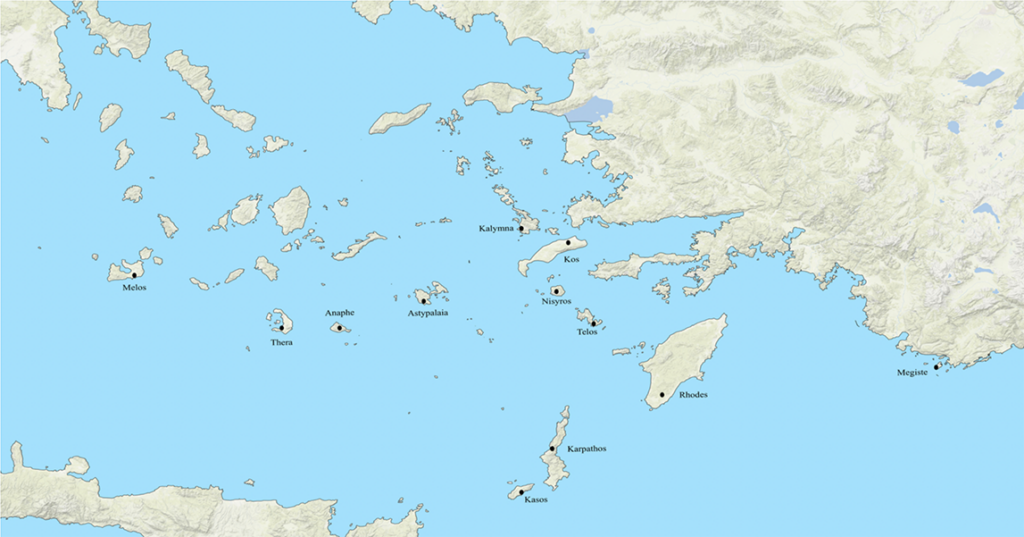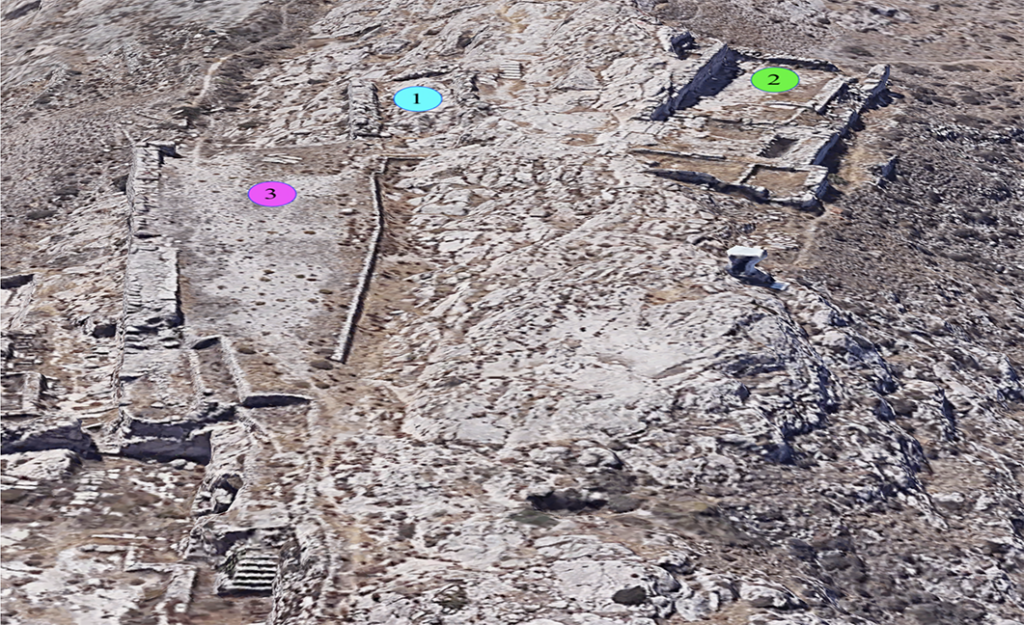Nieto Izquierdo, Enrique. "The making of Paradeigmata VI.4: Unveiling the Doric Islands of Ancient Greece." CHS Research Bulletin 13 (2025). https://nrs.harvard.edu/URN-3:HLNC.ESSAY:106296652.
The Paradeigmata Project
Paradeigmata VI.4: The Doric Islands of the Aegean Sea

The Selected Inscriptions and Entries
- Rhodes: 30 entries
- Cos: 16 entries
- Thera: 11 entries
- Other islands (Nisyros, Melos, Astypalaia, Karpathos, Kasos, Telos, Megiste): 27 entries. [2]
The corpus includes 24 votive inscriptions, sacred norms, and ritual calendars—the most prevalent text types in the region—followed by 16 proxeny decrees, 10 funerary texts, and a variety of other inscriptions, including milestones, property records, honorific statues, graffiti, competition prizes, testaments, prohibitions, decisions, acclamations, and a narrative text.
This is followed by a descriptive introduction detailing the object’s dimensions, proposed date (based on palaeographic and/or historical evidence), state of preservation, and documentation (e.g., autopsy, photographs, ectypa , or whether the inscription is lost or unverified). A curated list of previous editions and re-editions is included, in which we prioritize those that significantly contribute to the text’s understanding or scholarly discussion.
ÉGÉE.02. Théra. Noms de divinités
Analysis of the alphabet reveals these inscriptions as the earliest in the site. [5] Notable features include the use of <E> for /εː/ (e.g., Ϙōρε̄́ς), <O> for /ɔː/ (e.g., Ἀπόλ(λ)ōν), and <H> exclusively for initial /h/ or in combinations like <KH> (/kh/) and <ΠΗ> (/ph/) (e.g., Κhίρōν). [6] Later inscriptions further east on the site, slightly postdating these, use <H> for /εː/ and <ʘ> for /ɔː/, [7] while those further south, mostly Hellenistic, show further evolution. [8]

